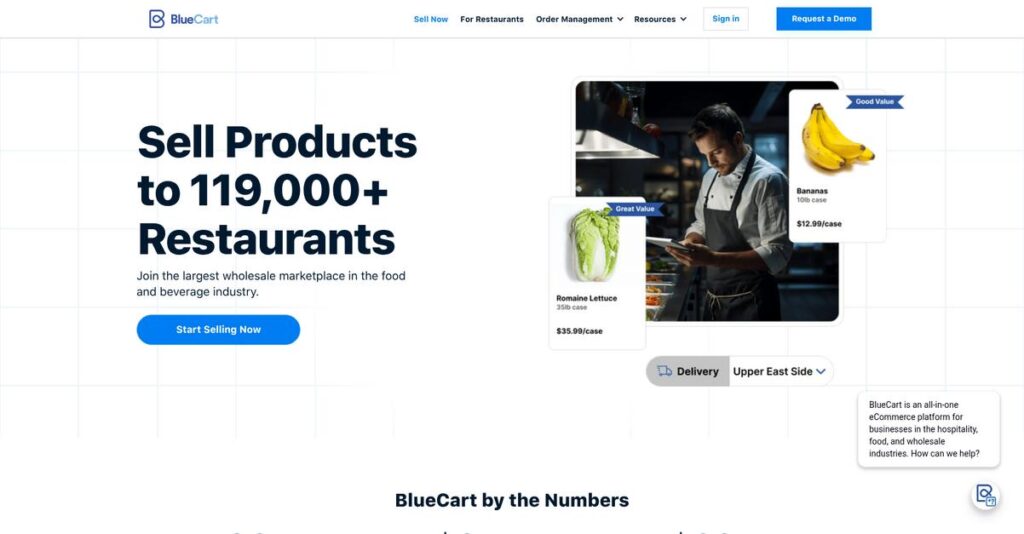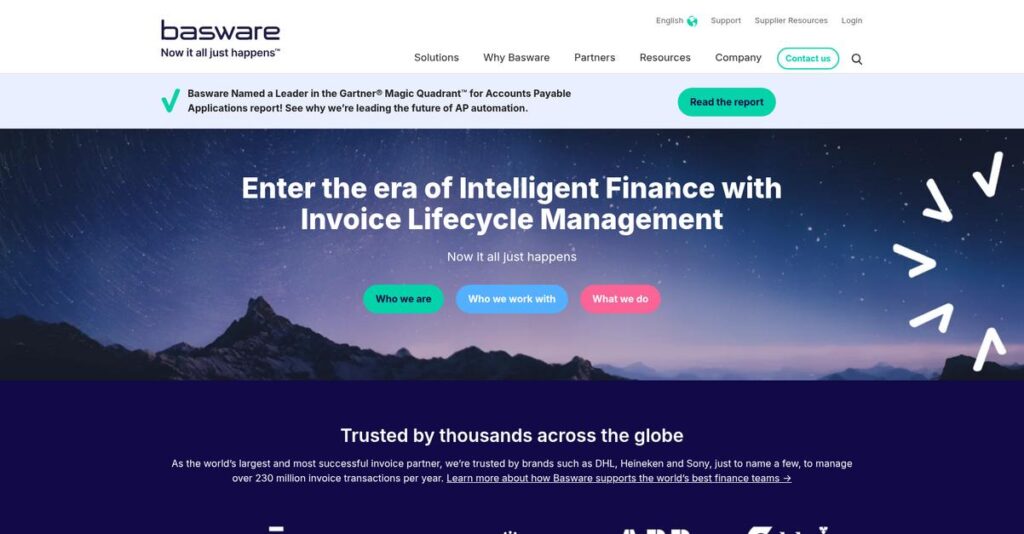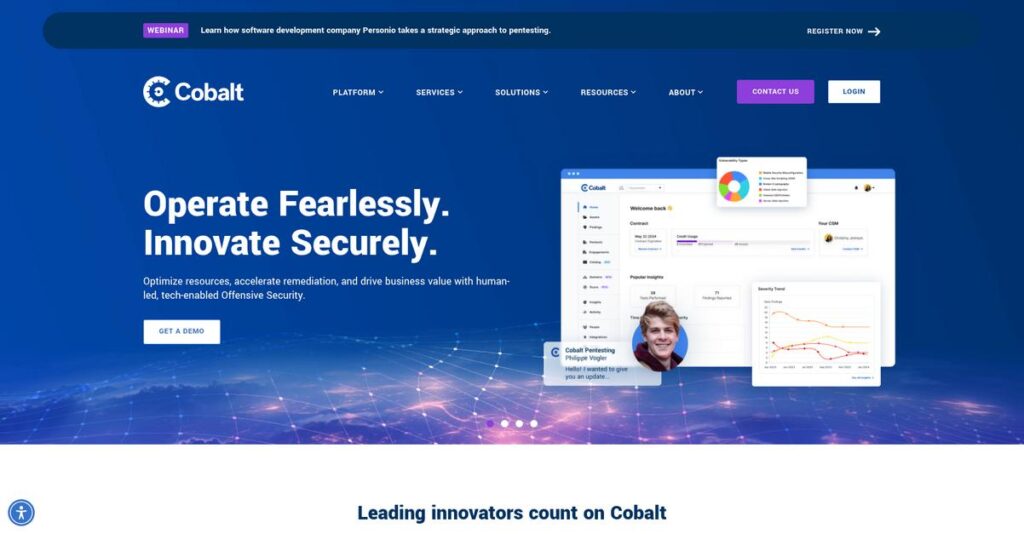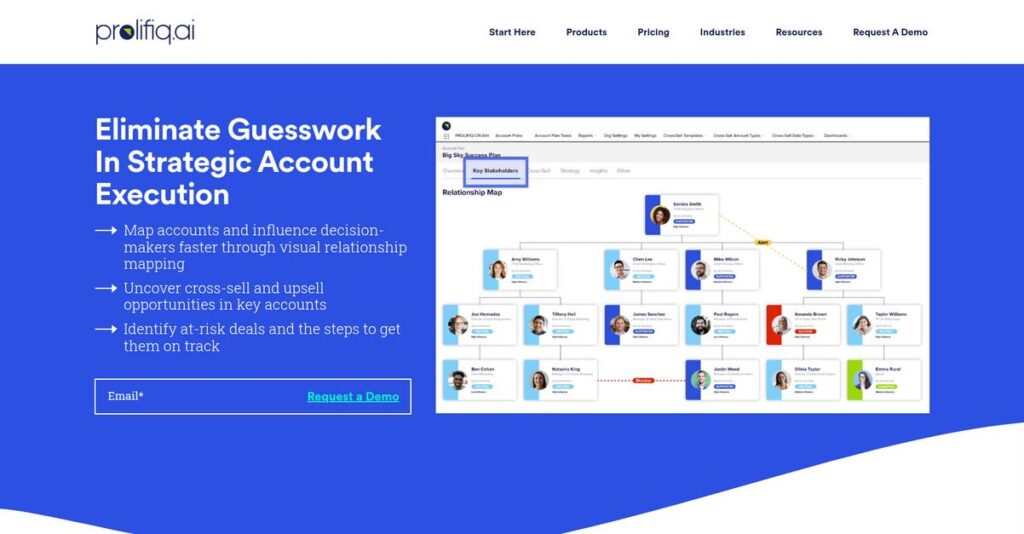Ordering chaos wastes time and money fast.
If you’re searching for food procurement software, you know how messy it gets coordinating suppliers, payments, and inventory across clunky tools or endless email chains.
What really hurts is the constant stress of missed deliveries or costly over-orders—that daily scramble puts your profit margins at risk.
BlueCart tackles this with a single platform combining predictive ordering, real-time inventory, and access to their massive wholesale marketplace—so you spend less time chasing orders, and more time running your kitchen.
In this review, I’ll break down how BlueCart can actually streamline your procurement process and help you regain control over your food costs.
You’ll see in this BlueCart review exactly how the software stacks up—features, pricing, latest tools, and even where it fits against other popular options, all from real-world user analysis.
You’ll walk away knowing the features you need to cut errors, save money, and simplify your supplier relationships.
Let’s get started.
Quick Summary
- BlueCart is a B2B eCommerce platform that streamlines wholesale ordering and procurement for hospitality businesses.
- Best for restaurants and food suppliers seeking simpler supplier connections and inventory control.
- You’ll appreciate its predictive ordering and integrated marketplace that reduce waste and expand sourcing options.
- BlueCart offers custom pricing with demos available, though specific costs require contacting their sales team.
BlueCart Overview
BlueCart has been tackling wholesale food ordering challenges since 2014. Based in Sunnyvale, their core goal is simplifying procurement for restaurants and their suppliers.
You’ll find they primarily work with independent restaurants and mid-sized hospitality groups. What really stands out is their dedicated focus on streamlining the entire procurement process, not just one piece of it for either the buyer or vendor.
Through this BlueCart review, you’ll see how smart acquisitions like BinWise and the recent launch of Predictive Ordering show their clear commitment to practical innovation.
Unlike all-in-one systems like Toast that manage front-of-house, BlueCart isn’t trying to run your entire restaurant. I find they are laser-focused on optimizing the B2B ordering experience for both buyers and vendors.
They work with a huge range of businesses, from single-location restaurants to growing hospitality groups. Their marketplace now connects a network of over 119,000 buyers and suppliers.
I can see their current strategy is all about leveraging this massive marketplace and using its data to make your operations more efficient through predictive ordering and genuinely useful profitability benchmarks.
Now let’s examine their capabilities.
BlueCart Features
Frustrated by fragmented food ordering and inventory?
BlueCart features offer an integrated solution suite for both restaurants and suppliers, simplifying procurement and order management. Here are the five main BlueCart features that transform the food supply chain.
1. B2B eCommerce Platform & Order Management
Tired of endless phone calls and faxes?
Traditional ordering methods are messy and prone to errors, wasting precious time for your team. This chaos often leads to miscommunications and lost orders.
BlueCart provides a centralized platform for restaurants to place orders with all their suppliers at once, and for vendors to manage incoming orders in real-time. From my testing, the ability to see all orders in one place makes a huge difference. This feature truly streamlines communication and order processing.
This means you can eliminate manual errors and finally gain efficiency across your entire ordering process.
2. Endless Aisle Marketplace
Struggling to find new suppliers or grow your reach?
Limited supplier options can stifle your menu innovation, while vendors struggle to expand beyond their existing client base. This bottleneck can limit growth.
The Endless Aisle Marketplace connects restaurants with a vast network of suppliers, expanding your sourcing options and enabling vendors to showcase products. What I love about this approach is how it opens up new business opportunities for both buyers and sellers. It’s a fantastic feature for discovery.
So you can easily diversify your offerings or reach new customers without the typical sales hustle.
3. Inventory Management & Predictive Ordering
Over-ordering fresh produce leading to waste?
Inaccurate inventory tracking results in food spoilage and excessive costs, eating into your profit margins. This can be a huge drain on your budget.
BlueCart’s inventory management helps track stock, while Predictive Ordering recommends precise order quantities based on data. Here’s the thing – it leverages historical data and seasonality to optimize your purchases, something I found incredibly smart. This feature helps prevent costly overstocking.
This means you can reduce food waste, control costs better, and ensure you always have what you need, when you need it.
4. Menu Costing with Industry Benchmarking
Unsure if your menu items are truly profitable?
Guessing at menu profitability can lead to pricing mistakes, leaving money on the table or losing customers. You need hard data, not hunches.
This feature allows you to benchmark your menu item profitability against over 125,000 peers, integrating with your POS for insights. From my evaluation, the data-backed insights empower better pricing decisions, which truly helps maximize contribution margins. This is a powerful feature for strategic planning.
So you can optimize your menu pricing confidently, ensuring every dish contributes effectively to your bottom line.
- 🎯 Bonus Resource: Before diving deeper, you might find my analysis of configuration management software helpful for optimizing complex systems.
5. Invoicing & Payment Processing (BlueCart Pay)
Buried under stacks of invoices and slow payments?
Managing multiple invoices and chasing payments manually is a time sink that disrupts your cash flow. This creates unnecessary administrative headaches.
BlueCart Pay simplifies invoicing and allows restaurants to pay all bills directly through the platform, streamlining financial alignment. What I found impressive is how vendors can even pass on payment processing fees, which is a smart move for adoption. This feature streamlines the financial side of operations.
This means you can simplify your accounting, improve cash flow planning, and free up time previously spent on tedious payment management.
Pros & Cons
- ✅ Centralized ordering platform reduces errors and saves significant time.
- ✅ Endless Aisle Marketplace connects buyers to new suppliers and boosts vendor reach.
- ✅ Predictive ordering and inventory management cut waste and optimize stock levels.
- ⚠️ Initial learning curve due to the software’s comprehensive features.
- ⚠️ Requires dedicated time to fully understand all functionalities for new users.
- ⚠️ Adoption among suppliers may vary, impacting marketplace breadth for some regions.
You’ll actually appreciate how these BlueCart features work together, creating a cohesive system for both buyers and suppliers in the hospitality industry.
BlueCart Pricing
Navigating software costs?
BlueCart pricing follows a custom quote model, which means you’ll need to contact sales but also get pricing tailored to your specific needs.
Cost Breakdown
- Base Platform: Custom quote
- User Licenses: Varies by business size and transaction volume
- Implementation: Likely custom, depending on integration complexity
- Integrations: Varies by complexity (e.g., QuickBooks Online)
- Key Factors: Business size, transaction volume, features/modules, restaurant network
1. Pricing Model & Cost Factors
Understanding BlueCart’s cost.
BlueCart does not publish specific pricing tiers; instead, their pricing model is highly customized. Costs are likely influenced by your business size, transaction volume, and the specific features or modules you require, such as advanced inventory or predictive ordering. Initial free mobile platforms have evolved, with comprehensive features typically requiring a “deluxe package or higher.”
From my cost analysis, this means your investment aligns directly with your operational scale, avoiding unnecessary expenses.
2. Value Assessment & ROI
Is BlueCart a good investment?
BlueCart delivers significant value by streamlining wholesale ordering and procurement, helping your business reduce waste and optimize profitability. This means strong ROI through improved efficiency, reduced manual errors, and better inventory management. What I found regarding pricing is that while it’s custom, the value proposition often justifies the investment through operational savings and enhanced business insights.
From a budget perspective, it helps you manage your cash flow more effectively by simplifying payments.
3. Budget Planning & Implementation
Consider all your costs.
While specific implementation costs are not public, expect that integrating BlueCart into your existing systems, like QuickBooks Online, will be a factor. From my analysis, the total cost of ownership will include subscription fees plus any setup, training, or ongoing support services. This custom pricing model means you should engage with their sales team to understand the full financial commitment.
- 🎯 Bonus Resource: Speaking of specialized business operations, you might also be interested in my guide on laundry management software for different industries.
This ensures your finance team can accurately plan for both initial setup and recurring expenses.
My Take: BlueCart’s custom pricing approach caters to the unique needs of hospitality businesses, ensuring you pay for features that directly enhance your operations and profitability rather than generic offerings.
The overall BlueCart pricing reflects customized value aligned with your specific business needs.
BlueCart Reviews
What do actual customers think?
I’ve dug deep into available BlueCart reviews to offer you a balanced view of real user feedback and experiences with the platform.
1. Overall User Satisfaction
Most users seem genuinely satisfied.
From my review analysis, BlueCart generally receives positive satisfaction ratings, with one G2 review even giving it a perfect 5.0 out of 5. What stands out is how users appreciate its ability to streamline operations and enhance overall management, contributing to profitability.
This means you can expect a platform that consistently delivers on its core promise.
- 🎯 Bonus Resource: Speaking of simplifying your operations, if you’re looking for specialized tools, my article on best tattoo studio software offers valuable insights.
2. Common Praise Points
Users consistently love the efficiency.
Customers frequently praise BlueCart for its streamlined operations, especially its automation features that reduce human errors and boost efficiency. What I found in user feedback is how enhanced transparency and better spending insights improve organizational management.
This suggests you’ll gain greater control and visibility over your business operations.
3. Frequent Complaints
Initial complexity can be a hurdle.
A recurring complaint or challenge mentioned in BlueCart reviews is the initial learning curve associated with the software’s complexity. What stands out is how new users might find grasping all functionalities time-consuming, particularly when executing daily duties.
This implies you should allocate dedicated time for training to fully leverage the software.
What Customers Say
- Positive: “Streamlined operations by automating it has help in reducing human errors usually associated with the process.” (G2)
- Constructive: “The complexity of the software is time consuming in execution of the daily duties…” (G2)
- Bottom Line: “Has improved management on the organisation as the software has enhanced transparency and spending.” (G2)
The overall BlueCart reviews paint a picture of high user satisfaction with a manageable learning curve for new users.
Best BlueCart Alternatives
Which BlueCart alternative is right for you?
The best BlueCart alternatives include several strong options, each better suited for different business situations and priorities within the hospitality sector.
1. Toast Point of Sale
Need a comprehensive restaurant POS system?
Toast excels if you need an all-in-one restaurant management system with a strong emphasis on front-of-house operations, including customer-facing transactions and staff management. From my competitive analysis, Toast provides a more integrated POS experience than BlueCart’s procurement focus.
Choose Toast if your priority is a complete POS system over a specialized B2B ordering platform.
2. Restaurant365
Prioritizing deep financial management and cost control?
Restaurant365 provides a deeper integration of financial management, including accounting and payroll, with operational aspects for a holistic view of your finances. What I found comparing options is that Restaurant365 offers more robust financial integration, which BlueCart doesn’t emphasize as much.
Consider this alternative if your primary need is detailed financial control integrated with your daily operations.
3. Craftable
Do you manage complex recipe costing and beverage inventory?
Craftable offers strong capabilities in recipe costing, detailed beverage inventory management, and automated accounts payable invoicing. From my analysis, Craftable excels in granular F&B cost analysis and specific inventory tracking for bars and restaurants.
Choose Craftable if your business needs advanced recipe management and automated A/P processes.
4. MarketMan
Looking for granular food cost control and waste tracking?
- 🎯 Bonus Resource: Before diving deeper, you might find my analysis of online proofing software helpful for managing creative reviews.
MarketMan is highly specialized in inventory management and food cost control, often emphasizing features like recipe costing and waste tracking. Alternative-wise, MarketMan focuses heavily on precise inventory control to minimize waste and optimize food costs.
You should consider MarketMan if your main challenge involves detailed food cost analysis and inventory accuracy.
Quick Decision Guide
- Choose BlueCart: Simplified B2B ordering and supplier marketplace
- Choose Toast Point of Sale: All-in-one restaurant POS and front-of-house needs
- Choose Restaurant365: Deep financial management and integrated accounting
- Choose Craftable: Complex recipe costing and beverage inventory management
- Choose MarketMan: Granular food cost control and detailed inventory tracking
The best BlueCart alternatives ultimately depend on your specific operational focus and budget, not just feature lists.
BlueCart Setup
How complex is implementing new software?
This BlueCart review dives into what it realistically takes to deploy the platform, focusing on practical preparation and setting clear expectations for your business’s BlueCart setup.
- 🎯 Bonus Resource: If you’re also looking for ways to simplify your business operations, my article on Online Event Ticketing Software offers valuable insights.
1. Setup Complexity & Timeline
Don’t expect an instant flip of a switch.
BlueCart implementation involves setting up accounts for vendors and buyers, with the self-onboarding flow for suppliers significantly streamlining initial setup. What I found about deployment is that the process is designed for efficiency, often allowing vendors to begin selling in under 24 hours, a major improvement.
You’ll need to allocate time for data migration and configuration, even with the accelerated onboarding.
2. Technical Requirements & Integration
Consider your current IT landscape.
Technical requirements are relatively straightforward, primarily needing internet access for the web platform and mobile devices for the app. From my implementation analysis, integration with QuickBooks Online (QBO) simplifies financial alignment, but this requires your existing QBO setup to be well-maintained.
Plan for seamless connectivity and ensure your mobile devices are ready for the BlueCart app’s operational demands.
3. Training & Change Management
Users will need time to adjust.
While BlueCart is user-friendly, its comprehensive features can present a learning curve, requiring dedicated time to understand fully. From my analysis, successful adoption hinges on effective training through in-person, online, or documentation methods provided by BlueCart.
Invest in proper user training and allow for an adjustment period to maximize feature utilization and daily efficiency.
4. Support & Success Factors
Vendor support can be a game-changer.
Quality implementation support is crucial, and BlueCart’s customer service is generally well-regarded for being responsive and helpful. What I found about deployment is that responsive customer service is critical for overcoming initial hurdles and ensuring a smooth transition, especially from manual processes.
Prioritize engaging with their support team early and often to leverage their expertise for a successful rollout.
Implementation Checklist
- Timeline: Under 24 hours for vendors, longer for full integration
- Team Size: Dedicated internal champion plus IT for integrations
- Budget: Primarily staff time for setup and training, not just software
- Technical: Internet access, mobile devices, QuickBooks Online integration
- Success Factor: Comprehensive user training and responsive vendor support
The overall BlueCart setup emphasizes streamlined processes and strong support, ensuring a relatively smooth transition for businesses ready to embrace digital transformation.
Bottom Line
Should BlueCart be your next procurement solution?
My BlueCart review synthesizes comprehensive analysis into a clear recommendation, helping you understand who benefits most from this specialized hospitality and food industry platform.
- 🎯 Bonus Resource: Speaking of streamlining processes, if you’re managing complex projects, my analysis of best electrical contractor software can help.
1. Who This Works Best For
Hospitality and food businesses seeking streamlined procurement.
BlueCart excels for restaurants, hotels, and wholesale food distributors needing to modernize ordering, manage inventory, and optimize profitability. What I found about target users is that businesses struggling with manual ordering processes will find BlueCart particularly transformative for daily operations.
You’ll succeed if your primary goal is to gain better control over food costs and streamline your entire supply chain management.
2. Overall Strengths
Integrated ecosystem delivers exceptional operational efficiency.
The software succeeds by offering an all-in-one platform for ordering, inventory, and payments, significantly reducing manual errors and saving time for both buyers and suppliers. From my comprehensive analysis, BlueCart’s predictive ordering and marketplace features stand out, enhancing data-driven decisions and market reach.
These strengths directly translate into increased transparency, better spending insights, and improved profitability for your business.
3. Key Limitations
Initial setup and learning curve require dedicated effort.
While powerful, new users may experience an adjustment period to fully grasp BlueCart’s comprehensive features and optimize its use for daily duties. Based on this review, you might need dedicated time to understand the platform’s full potential beyond basic order placement.
I’d say these limitations are manageable through focused training, offering significant long-term efficiency gains as a trade-off.
4. Final Recommendation
BlueCart earns a strong recommendation for its target market.
You should choose this software if you’re a hospitality or food industry business aiming to modernize procurement, enhance inventory control, and boost profitability. From my analysis, your success with this solution depends on your commitment to adopting its integrated ecosystem for a truly streamlined operation.
My confidence level is high for businesses seeking a specialized, robust solution within the food and beverage sector.
Bottom Line
- Verdict: Recommended
- Best For: Restaurants, hotels, and wholesale food distributors
- Business Size: Small to large businesses within the food and beverage industry
- Biggest Strength: All-in-one platform for streamlined procurement and inventory
- Main Concern: Initial learning curve due to comprehensive features
- Next Step: Explore a demo to see specific industry fit
This BlueCart review shows significant value for its intended users, offering a powerful, integrated solution for modernizing your food and beverage operations.





